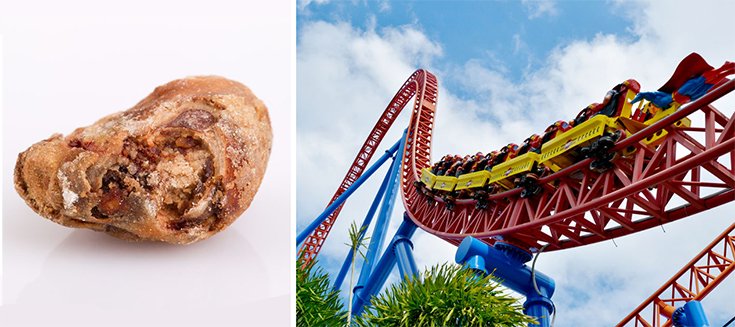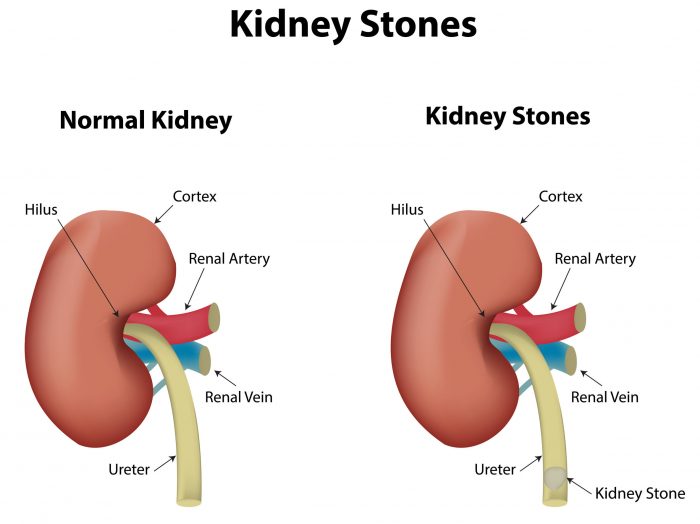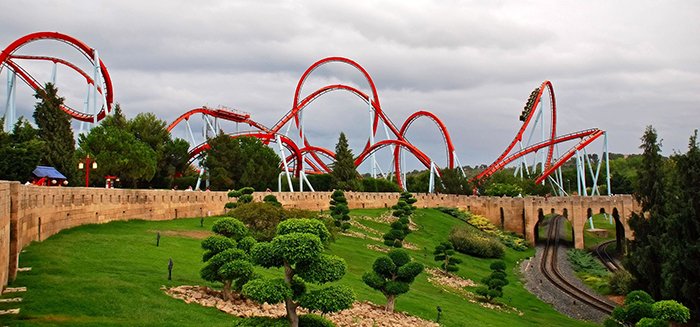Got Kidney Stones? A Few Roller Coaster Rides Might Help

Most people ride roller coasters for the thrill of plunging and twirling from breathtaking heights, but it seems there might also be a health benefit to this favorite amusement park attraction: passing small kidney stones. [1]
Researchers found that riding the Big Thunder Mountain Railroad roller coaster at Disney World could help ease the passage of the jagged stones, which affects 1 in 10 Americans during his or her lifetime.
Roller coasters and kidney stones are 2 things that make people scream, so you’d might as well kill 2 birds with 1 stone.
What are Kidney Stones?
Kidney stones are hard masses that form in the kidneys. They can be as small as a grain of sand, or as large as a golf ball. Much of the time, kidney stones pass out of the body on their own, but in extreme cases, doctors may need to surgically remove it, or use a scope or sound waves to break it apart.
When kidney stones pass naturally, they must travel from the kidney down the ureter and to the bladder, and then through the urethra. This is often a very painful process.

The Study
So, how did this whole thing come about? Did researchers pick random amusement park rides to send their patients on?
In actuality, investigators noticed that several of their patients had reported passing kidney stones after going on Big Mountain Railroad roller coaster at the Disney theme park in Florida. In one case, a man told the doctors that he passed a stone after riding the coaster 3 consecutive times.
Urological surgeon David Wartinger, a professor emeritus at Michigan State, said:
“That was just too powerful to ignore. I’d been hearing these anecdotal stories for a couple years, and then I thought, okay, there’s really something here.” [2]
To study the phenomenon, the researchers created a 3D model of a kidney that could be concealed in a backpack and taken along for the ride. [1]
In this day and age, a bunch of men repeatedly riding a roller coaster in a huge theme park with a backpack might make people nervous, but Wartinger and his colleagues had already considered that. The experiment would require getting express permission from Disney. He explained:
“It was a little bit of luck.
We went to guest services, and we didn’t want them to wonder what was going on—two adult men riding the same ride again and again, carrying a backpack. We told them what our intent was, and it turned out that the manager that day was a guy who recently had a kidney stone. He called the ride manager and said, do whatever you can to help these guys, they’re trying to help people with kidney stones.” [2]
In the experiment, the researchers placed 3 real kidney stones and some urine in the model kidney. The stones ranged in size from a small 4.5 cubic millimeters to a medium 13.5 mm, to a large 64.6 cubic mm.
Researchers – and the 3D kidney – rode Big Mountain Railroad 20 times, experimenting with the position of the different-sized stones in different parts of the model. The largest stone was placed in the upper part of the kidney, then in the middle of the model. Eventually, each stone was placed in each location of the kidney for at least 1 ride.
The major limitation of the experiment was “seat assignment on the roller coaster was random and determined as a function of place in the waiting line.”
Ultimately, seat placement had a major impact on the team’s findings. When the researchers were seated in the rear car of the roller coaster, the kidney stones passed about 64% of the time, regardless of their size and location in the kidney.
Wartinger said:
“What was amazing was within just a few rides it became obvious that there was a huge difference in passage rates whether you sat in the front or the rear of the coaster. There was a lot more whipping around in that rear car.”
However, when the researchers sat in the front of the ride, the stoned passed only 17% of the time. [1]
You Don’t Have to Visit Orlando

Wartinger said other roller coasters are probably just as therapeutic as Big Mountain Railroad.
“Some rides are going to be more advantageous for some patients than other rides. So I wouldn’t say that the only ride that helps you pass stones is Big Thunder Mountain. That’s grossly inaccurate.”
Phew! You don’t have to travel to Orlando, Florida, to get rid of your kidney stones after all.
But to know for sure whether roller coasters truly help people pass small kidney stones, Wartinger said he would need a prospective clinical trial using real people with real kidneys. He knows exactly how he’d go about it: He’d take people with kidney stones and perform an ultrasound before the ride and after, and see if the stones moved.
Wartinger couldn’t do that right away, however because universities’ institutional review boards would require experimental evidence to prove the concept first.
And as for where the urine in model kidney came from, Wartinger said: “It was mine.”
The study appears in the September 26 issue of the Journal of the American Osteopathic Association.
Sources:
[1] LiveScience
[2] The Atlantic
